Researchers using the Chandra X-ray Observatory have found that a known pulsar is moving through a supernova remnant at over one million miles per hour. Plus, the life and death of stars, new pictures of the Large Magellanic Cloud, and all of the SpaceX rocket launches.
Podcast
Show Notes
SpaceX launches three rockets in three days
- Starlink mission page (SpaceX)
- SARah-1 mission page (SpaceX)
- Globalstar FM15 mission page (SpaceX)
- US Military Places a Bet on LEO for Space Security (SDA)
KSLV-II reaches orbit on second attempt
- S. Korea successfully launches homegrown space rocket in second attempt (Yonhap News Agency)
Researchers get closer to understanding star formation details
- CFA press release
- “The dynamics and outcome of star formation with jets, radiation, winds, and supernovae in concert,” Michael Y Grudić et al., 2022 March 2, Monthly Notices of the Royal Astronomical Society
White dwarf eats diverse diet of solar system objects
New images from old data
- NASA JPL press release
Pulsar racing through supernova remnant
- CFA press release
- CXO image release
- “The Proper Motion of the Pulsar J1124–5916 in the Galactic Supernova Remnant G292.0+1.8,” Xi Long, Daniel J. Patnaude, Paul P. Plucinsky, and Terrance J. Gaetz, 2022 June 22, The Astrophysical Journal
Building a 3D puzzle of Barnard’s Loop
- CFA press release
- “A 3D View of Orion: I. Barnard’s Loop,” Michael Foley et al., 2022 June 16, Authorea (preprint)
Transcript
Hey Pamela, guess how many Falcon 9 rockets launched this weekend?
More than one?
Three! SpaceX launched three Falcon 9 rockets in just over 36 hours, from three different pads.
That’s the most they’ve done.
And South Korea’s KSLV II successfully made orbit.
That’s a lot of rockets. Like an entire segment of rockets.
You also have stars living and stars dying and eating planets as they do…
And new pictures of the Large Magellanic Cloud from old data.
All that and more, right here on the Daily Space.
I am your host Dr. Pamela Gay.
I am your host Erik Madaus.
And we’re here to put science in your brain.
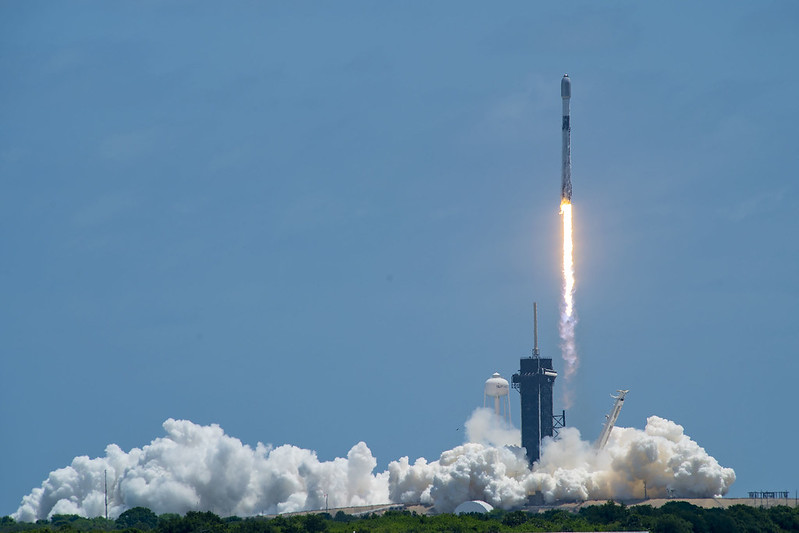
This weekend was the SpaceX launch-a-palooza. They managed to send up three Falcon 9 rockets in just over 36 hours: one on June 17 at 16:08 UTC, the next on June 18 at 02:19 UTC, and the last one on June 19 at 04:27 UTC.
The first of these launches was another batch of Starlink satellites, of course. Booster 1060 sent 53 more Starlinks into orbit from historic launch complex39A in Florida. A milestone set on this flight was the first thirteenth launch of a booster. It successfully landed on the droneship A Shortfall of Gravitas.
About a day later and on the opposite side of the country, another Falcon 9 launched the SARah-1 satellite into polar orbit. SARah-1 is a synthetic aperture radar satellite built by Airbus for the German military. No details about the payload were disclosed, but it was apparently light enough for the booster to perform a return to launch site maneuver, landing a couple of hundred meters from where it lifted off just a couple of minutes prior.
Vandenberg was covered in its typical marine layer of fog which obscured many of the views of the launch until the rocket had punched through the fog layer and provided some beautiful views of the California coast during the ascent, separation, and return phases of the launch. Conditions at the landing zone had improved quite a bit by the time the booster landed, presenting views with a good view of the landing.
The satellite was successfully deployed into orbit after a second burn of the upper stage. The German military later thanked SpaceX on social media for the successful ride. Two more SARah satellites will ride on Falcon 9 rockets later this year and next year.
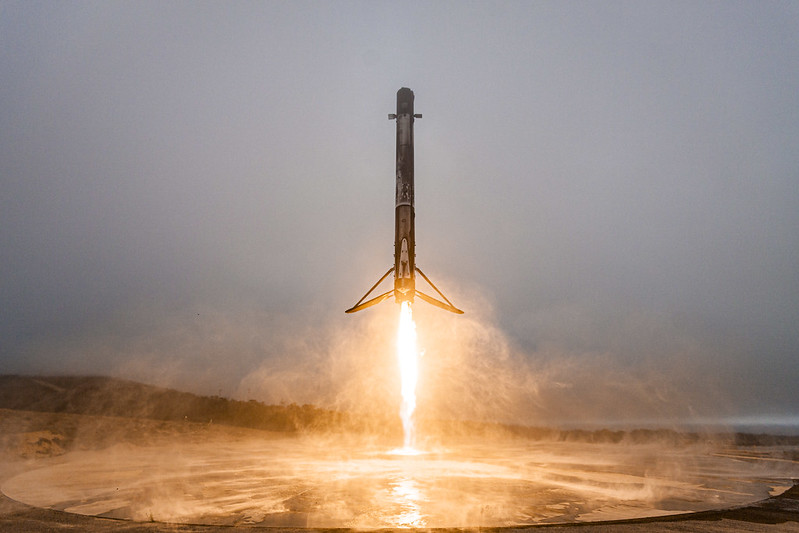
The final SpaceX launch of the weekend was the one that had the most interest from fans. The information announced about the launch didn’t quite make sense. The primary payload was a 700-kilogram satellite going into a not particularly high orbit – about twice as high as Starlink but nowhere near geostationary Earth orbit – yet it was on a Falcon 9 with a downrange first stage landing.
The publicly known payload on the Sunday morning flight was Globalstar FM-15. Globalstar was one of the first companies to launch a satellite communications constellation back in the late twentieth century, and they launched the second generation of satellites in the mid-2010s. FM-15 was built as a ground spare for this second generation, which Globalstar has evidently decided to launch.
The other satellites on the mission were less clear, but the enthusiast community has a couple of theories based on a few pieces of evidence.
First, the mission press kit mentioned a “rideshare” indicating that more than one satellite would be onboard.
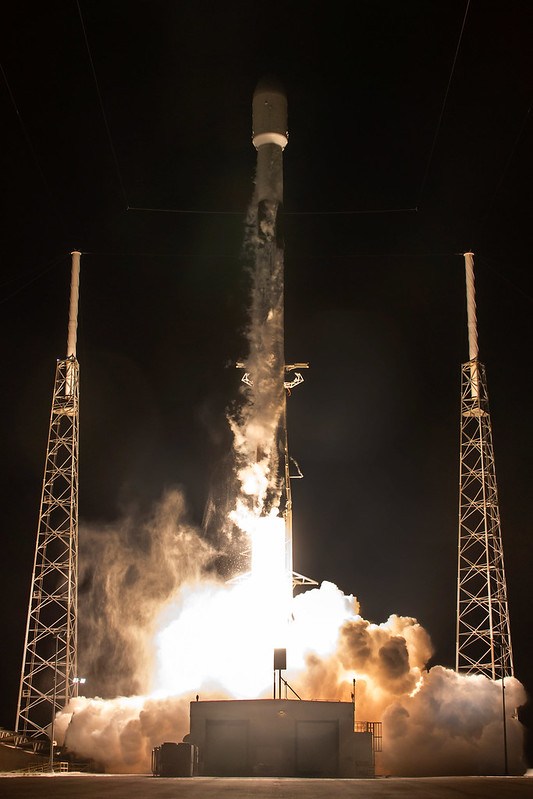
Second, the mission plan included three burns of the second stage engine prior to satellite separation. That wouldn’t make sense for a single satellite. Also, no views of the second stage were shown until an hour into the flight, after the second burn. When the forward-facing camera was finally shown, the view had the Globalstar satellite mounted sideways, with a mysterious fixture on the top of the payload stack.
Space enthusiasts on Twitter and other places, such as the fantastic NASAspaceflight forum, quickly linked this structure to a mechanism used to hold Starlink satellites on previous satellite rideshare missions, such as Transporter 2 and 3. If SpaceX was launching Starlinks along with the Globalstar sat, you would think they would mention this, right? Something else must be going on.
What semi-secret Starlink-derived satellites could SpaceX be launching? One possible answer to that question is fairly simple. In 2021, SpaceX got a contract from the Missile Defense Agency for several missile launch detection satellites using the Starlink satellite bus. It is possible the mystery satellites are early test versions of this satellite design, though they weren’t supposed to launch for another couple of months, in September 2022.
The day after launch, June 20, the satellites from the launch were finally listed in the online database Space-Track. Globalstar FM15 was added along with four other satellites simply designated USA 328 through 331 and one debris object. A USA-number is a designation given to U.S. military satellites. The debris object is probably a tension rod that held the Starlink-derived satellites together before separation.
In some ways, this is reminiscent of the Transporter 3 launch this past January, which included four undisclosed satellites riding up on a Starlink rideshare adapter.

On June 21 at 07:00, the Korean Aerospace Research Institute successfully launched the second KSLV-II into orbit from the Naro Space Center off the coast of South Korea. It reached orbit about fifteen minutes later, putting two payloads into a 700-kilometer sun-synchronous orbit.
The launch comes only a couple of months after the first launch of the KSLV-II failed to reach orbit due to a problem with the third stage of the rocket. The KSLV-II is designed to put up to 2.6 tons into orbit, and this second launch carried two payloads – a small functional “performance verification satellite” which will deploy four CubeSats before doing their own mission and a 1.3 metric ton mass simulator.
Okay, enough with the rocket launches. We’re going to get into all the stellar science next.
If any of you got to spend your weekend outside looking up, you may have been able to make out the heart of our Milky Way and the arms of the disk spilling across the late-night sky. This region, through a simple pair of binoculars, comes alive with star clusters, and rich nebulae illuminated by star formation.

Trying to understand how massive clouds of dust and gas evolve into pockets of stars has been straightforward from a big picture perspective, and amazingly complicated when looking at the details. While computer simulations have been able to reproduce events as detailed as galaxy mergers and the evolution of the large-scale structure of our universe, we just haven’t been able to replicate the remarkable structures of nebulae and their inefficient habit of turning just 1% of their mass into stars.
Now, a new model coming from Anna Rosen and her colleagues adds in new factors that bring us just that much closer to matching reality.
Where past simulations have only considered the effects of gravity, magnetic fields, and turbulence, these new models add in the effects of the stellar jets, radiation, winds associated with young stars, and the forces of supernovae exploding in the nebula. The simulation follows the cloud’s evolution for roughly nine million years — from the initial collapse of a cloud through to the dispersal of the cloud under the forces of the young stars it built.
This simulation is able to approximate observed star formation rates and the distribution of stellar masses seen in the sky. Researchers find it isn’t supernovae that disrupt star formation but rather the light pressure and wind pressure from young stars are enough to make star formation an inefficient process as the material to build stars is literally blasted away by the first stars to form.
This work is published in Monthly Notices of the Royal Astronomical Society. While this model still isn’t sufficient to let us replicate our favorite star-forming regions, this work shows we are getting ever closer to understanding the details of star formation.
From the birth of stars and star systems, we now turn to their death and look at how researchers have used a white dwarf’s eating habits to measure what once filled a solar system.
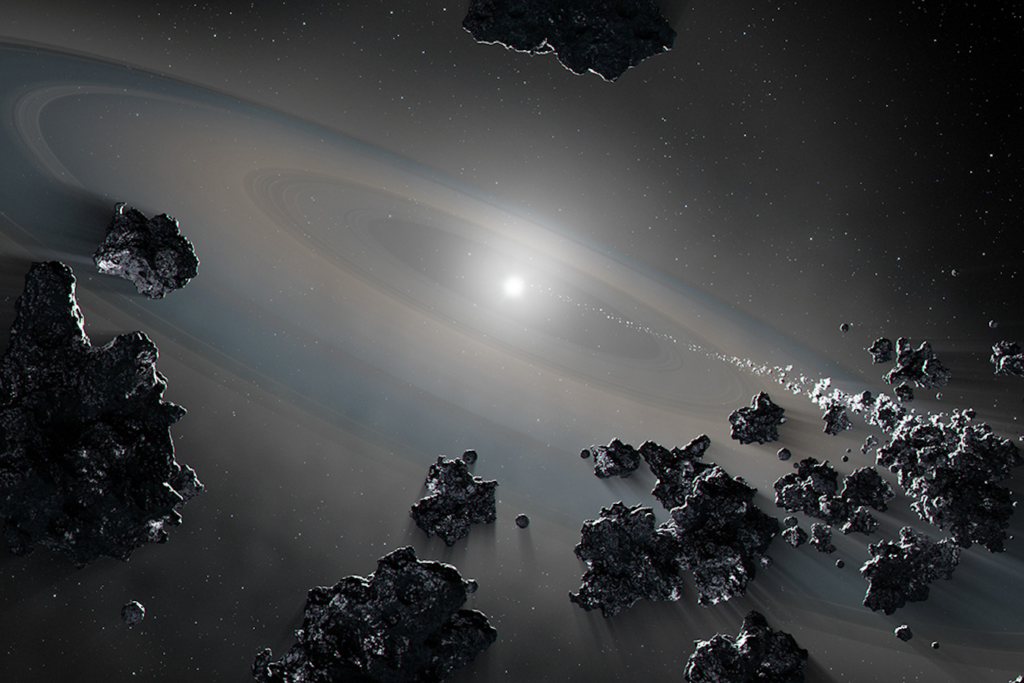
When stars like our Sun run out of the fuel for nuclear fission, they puff out their outer atmosphere, and their core collapses down into a dense hot ball of atomic nuclei and electrons. This process isn’t entirely kind to any surrounding solar system that may be present. As the star evolves toward a white dwarf, it first expands out to eat any inner worlds, and then the material it puffs off blasts anything that is left.
Over time, the blasted-off material blows away, and we can look in at the white dwarf, and sometimes we can see from its light that it has been eating what little might remain of its solar system.
In newly announced results from research done by then UCLA undergraduate Ted Johnson, the white dwarf G238-44 has been spotted devouring a diverse variety of objects. In its light, there is evidence of everything from Mercury-like rocky worlds to ivy solar system objects getting vaporized on the star’s surface.
While the destruction of worlds kind of indicates those worlds aren’t exactly good for current life, we can use their destruction to look for the chemistry that would have been good for past life. According to collaborator Benjamin Zuckerman: Life as we know it requires a rocky planet covered with a variety of volatile elements like carbon, nitrogen, and oxygen. The abundances of the elements we see on this white dwarf appear to have come from both a rocky parent body and a volatile-rich parent body — the first example we’ve found among studies of hundreds of white dwarfs.
Part of the reason we’re able to see this destruction is this white dwarf is still fairly young and we’re seeing, and I quote from the press release here: The true scale of the chaos, showing that within 100 million years after the beginning of its white dwarf phase, the star is able to simultaneously capture and consume material from its nearby asteroid belt and its far-flung Kuiper belt-like regions.
It’s a star-eat-planet universe out there, but these messy eaters are giving us the tool to say that yes, life could exist out there among the stars… or at least it could find the chemistry it needs.
Up next, we continue to explore the life and death of stars.
And now is the time on Daily Space when we look at – or talk about if you’re listening to the podcast – amazing space images. For those of you listening, we’ll have links to these images in our show notes at DailySpace.org.
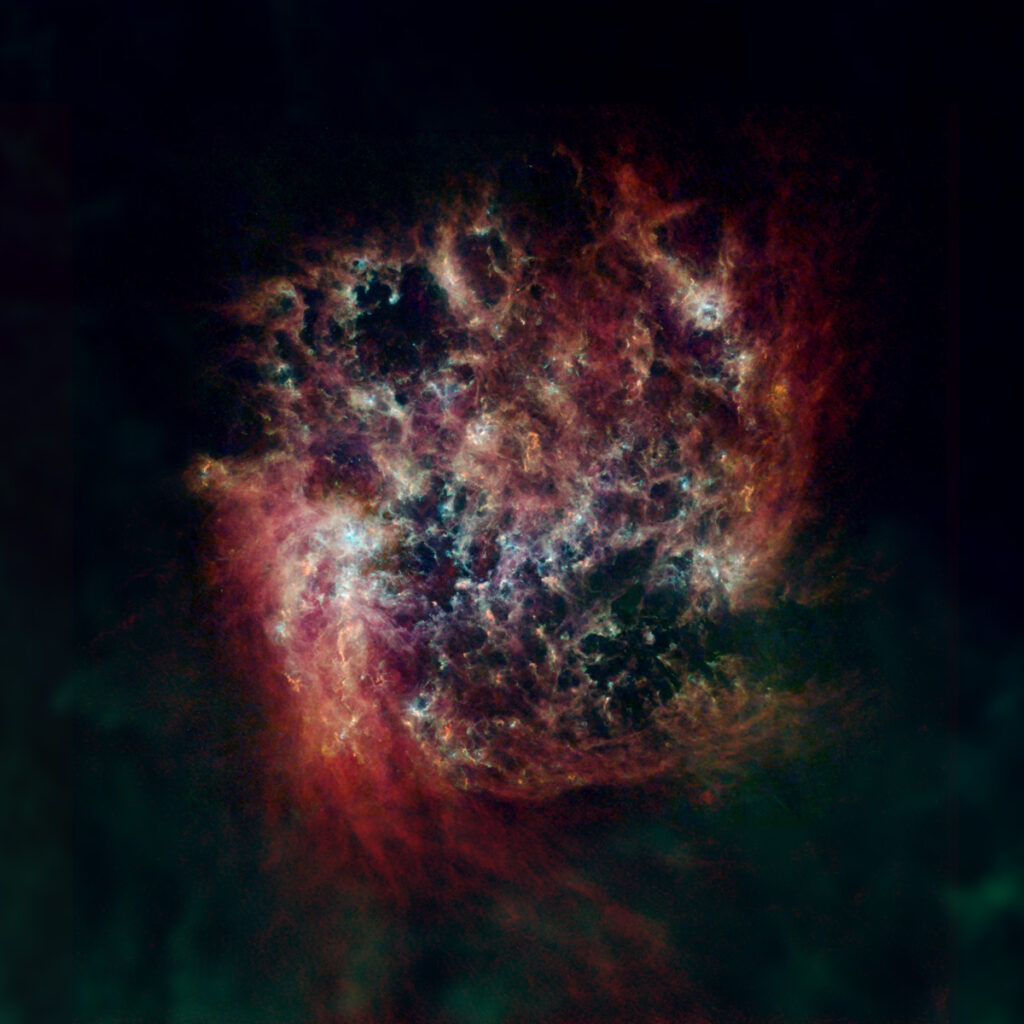
One of the best things about all the scientific data collected over the centuries is that it doesn’t go to waste and is still useful – and used – to this day. People go back through Harvard’s glass plates to find objects only recently discovered. Moon rocks from the Apollo missions are being released from the vaults and tested now. And more recently ended missions such as Kepler have petabytes of data to comb through.
And now astronomers have combined the data from several retired missions to create improved images of known objects.
The team started with images taken by the European Space Agency’s Herschel Space Observatory, which was retired in 2013. Herschel’s instruments looked at the universe in far-infrared light and revealed massive amounts of interstellar dust, giving us detailed images of structures in those clouds. But Herschel couldn’t see the light from clouds that were more diffuse and spread out, meaning the images missed 30% of the light from the dust.
So astronomers added in the data from three other retired missions: ESA’s Planck Observatory and NASA’s Infrared Astronomical Satellite (IRAS) and the Cosmic Background Explorer (COBE). And then they added in data collected by radio telescopes from around the world.
And new features appeared. For example, a new tail of gas can be seen coming off the Large Magellanic Cloud that wasn’t imaged before. Christopher Clark from the Space Science Telescope Institute led the work and notes: These improved Herschel images show us that the dust ‘ecosystems’ in these galaxies are very dynamic.

In news from the other end of the electromagnetic spectrum, researchers using the Chandra X-ray Observatory have found that a known pulsar is moving through a supernova remnant at over one million miles per hour.
Okay, this story is pretty neat because of the distances involved. The supernova remnant, G292.0+1.8, is located about 20,000 light-years from Earth. So in order to see how something within the remnant changed position, the team had to compare images taken ten years apart. A side-by-side comparison of the location of the pulsar found that it had traveled about 120 billion miles during this time frame. That turns out to be about 1.4 million miles per hour.
Pulsars are neutron stars that spin rapidly, brightening at a known and usually constant rate. In fact, pulsar timing was used to detect the first exoplanets. And neutron stars form when massive stars run out of fuel. Those stars collapse down so small due to their mass that all of the protons and electrons are crushed together and become neutrons. During formation, neutron stars also explode as supernovae, and sometimes, those explosions can send the star itself moving in a new direction. That appears to be what happened in the case of this particular pulsar.
Of course, this doesn’t explain just how the supernova gives off a directional kick to the star. Scientists have come up with two possible explanations. One involves neutrinos, produced during the supernova, being ejected in an asymmetric pattern, and the other possibility is that dust and stellar debris is ejected asymmetrically. With an asymmetric explosion, conservation of momentum kicks in, and the star has to move in the opposite direction.
This pulsar’s speed means that the amount of neutrinos required would be extreme, so the kick likely came from dust and stellar debris.
This research was presented at last week’s 240th meeting of the American Astronomical Society (AAS) and will be published in The Astrophysical Journal with lead author Xi Long.
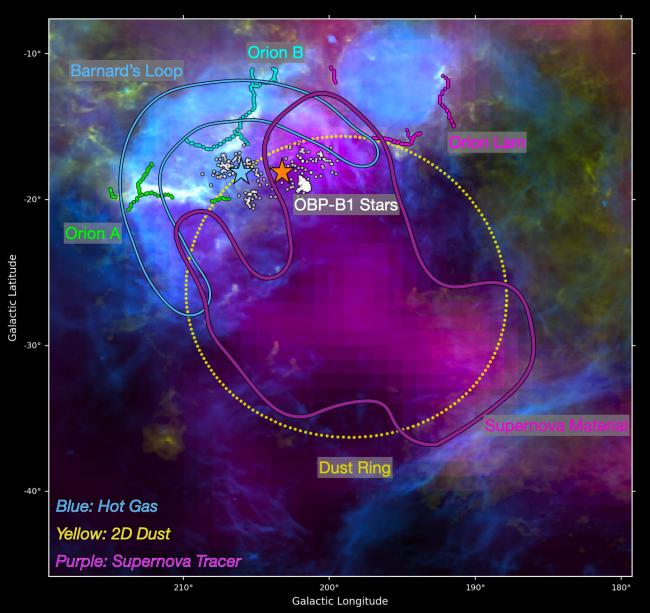
Finally, not every image produced these days is a simple two-dimensional image. Astronomers using the ‘glue’ visualization software have released a three-dimensional image and interactive figure of the star-forming region in Orion. And in creating their work, they made a discovery about the origin of Barnard’s Loop, an intriguing semicircle first observed back in 1894.
The results of the work were also presented at last week’s AAS meeting, and the study used data from Gaia, of course, to determine the 3D position and velocities of the young stars and clouds in Orion. Lead author Michael Foley explains: Prior to this work, most studies of Orion were confined to two dimensions — up-down and left-right on the sky. By adding in the third dimension — distance — we can begin to map out all sorts of interesting structures, like huge cavities of gas and dust or clusters of stars with very interesting motions. Combining the information from the interstellar gas and stars leads us to believe cavities were produced by a number of supernovae over the last few million years.
One of those newly discovered cavities corresponds with Barnard’s Loop, which is made of hot gas. There is evidence that a certain cluster of stars produced one more supernova and created a bubble that matches that arc of hot gas.
Additionally, much of the new star formation in Orion appears to be happening on the edges of these cavities. So stars go supernova, which pushes out all the gas and dust in a bubble around the star, which then triggers more star formation. Co-author Alyssa Goodman notes: It seems clear that we are going to see a ‘swiss cheese’ picture of the interstellar medium, with stars forming at the edge of the holes, as we map more and more of the galaxy.
The results of this study are consistent with the results of a previous study done by the team on the Per-Tau Supershell Local Bubble around the Sun. The current study is available online as a preprint. We’ll have a link in our show notes.
This has been the Daily Space.
You can find more information on all our stories, including images, at DailySpace.org. As always, we’re here thanks to the donations of people like you. If you like our content, please consider joining our Patreon at Patreon.com/CosmoQuestX.
Credits
Written by Pamela Gay, Beth Johnson, Erik Madaus, and Gordon Dewis
Hosted by Pamela Gay, Beth Johnson, and Erik Madaus
Audio and Video Editing by Ally Pelphrey
Content Editing by Beth Johnson
Intro and Outro music by Kevin MacLeod, https://incompetech.com/music/


 We record most shows live, on Twitch. Follow us today to get alerts when we go live.
We record most shows live, on Twitch. Follow us today to get alerts when we go live.